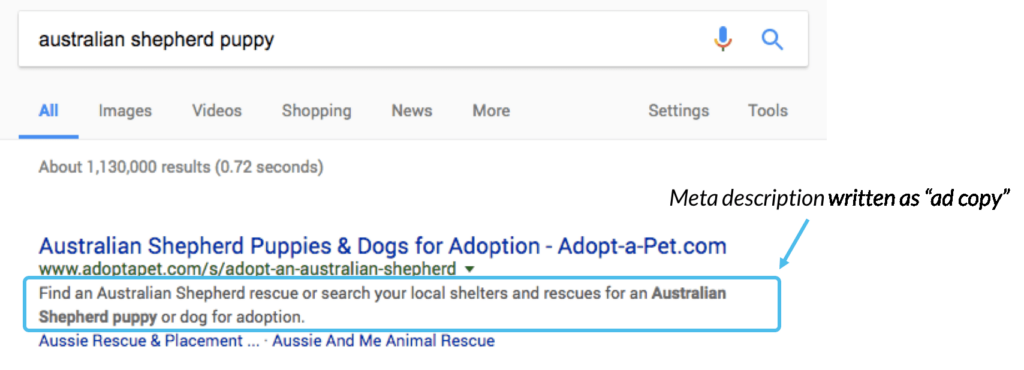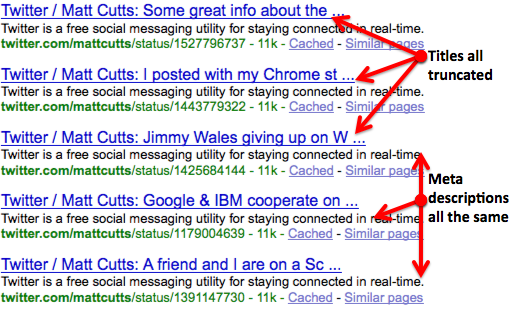The meta description is a HTML attribute that gives search engines a brief summary about your web page. Search engines like Google and Bing display the meta description in search results below the title of your page. The meta description can highly influence user click-through-rate so it’s important to understand best practices for SEO.

SEO and Meta Description Best Practices
1.) Stay within the optimal length
In order for your meta description to show the way you want it to, you should limit yourself to ~155 to 160 characters. If your description is any longer Google will truncate your snippet which can effect SEO. Best practices is to keep the meta description long enough to sufficiently describe your web page. Try not to drop below 120 characters as you are missing opportunities to better describe the page and include keywords. Remember that your main goal is to provide value and drive clicks to your website.
2.) Stay within the optimal format
Meta description tags, though believed to not directly effect search engine rankings, are incredibly important in gaining user click-through from SERPs. The click-through-rate and human engagement play a big role in SEO so these descriptions indirectly help with rankings. These short paragraphs offer you the ability to showcase your content to people and entice them into visiting your site.
A page’s description should sound natural and employ keywords that the page is targeting. It also needs to be compelling enough to warrant a click. So a good balance between the two is something to strive for.
3.) Understand that Google considers meta descriptions as a ranking factor
Google did announce in September of 2009 that neither meta descriptions nor meta keywords factor into Google’s ranking algorithm.
However meta descriptions can impact a page’s CTR on Google which can positively impact a page’s ability to rank. After all it is one of the first things a person reads when deciding to click on your site.
For this reason it’s important to put effort into writing quality meta descriptions.
4.) Write compelling copy
Meta descriptions work as advertising copy. The goal is to draw the attention away from other results and direct it to yours. Crafting your meta descriptions with readability and compelling information is crucial for success. To help maximize click-through-rates in search engine result pages, it’s important to note that Google bolds keywords in the description that match the search query. The bold text draws the eyes of the searcher. Try to match your description to the search terms as closely as possible.
Google also highlights words that they understand as synonyms. Being aware of these bold synonyms can give you a competitive edge and give insight into what search phrases you should include in your content.

5.) Avoid duplicates meta description tags
Similar to title tags, you should make sure your meta descriptions on each page are unique. Otherwise you’ll end up with search results that look like this.

If possible you should try to manually write an original description for each page. If however you are tasked with 3,000+ pages and simply don’t have the time you can come up with a simple template to use that you substitute just a few key words out for.
6.) Prepare yourself, search engines might not use your meta description
In some instances Google can decide to not opt into using your pre-written meta description and instead extract a snippet from the pages content. It’s impossible to predict when this will happen but it often occurs when Google doesn’t think the existing meta description adequately answers the user’s query.
